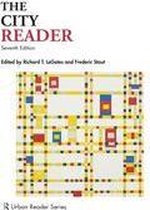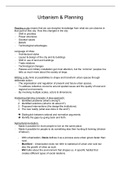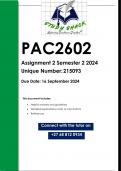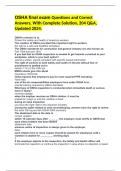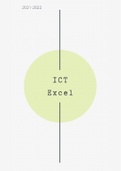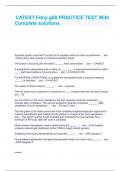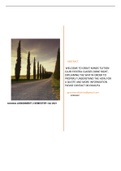Urbanism & Planning
Reading a city means that we can decipher knowledge from what we can observe in
that (part of the) city. How this changed in the city:
- Shift in priorities
- Power structures
- Societal values
- Beliefs
- Technological advantages.
Language of cities:
- Architectural styles
- Layout & design of the city and its buildings
- Shift in use of land and buildings
- Trade relations
- Technological changes
- Palaces and military installation get most attention, but the ‘common’ peoples live
tells us much more about the society at large.
Writing a city hints at possibilities to shape and transform urban spaces through
deliberate action:
- The organisation and regulation of present and future urban spaces.
- To address collective concerns around spatial issues and the quality of local and
regional environments.
- By involving multiple scales, actors & dimensions.
Analysing planning concepts: 4 step approach:
1. Identified problems (what’s wrong?).
2. Identified solutions (what to do about it?).
3. Proposed interventions (the design/the institutions).
4. The new reality (what was done in the end?).
Distinguish between rational and normative arguments.
Identify the gaps by going back and forth.
Agricultural revolution:
- Made it possible for more people to live on the same place.
- Made it possible for people to do something else then hunting & farming (division
of labour).
- With urbanization, Davis defines it as a process were urban grows faster than
rural.
- Mumford – Urbanization does not refer to statistical of urban and rural but
also the growth of cities as such.
- Wirt talks about the environment that shapes us. A specific habitat that
creates different types of social relations.
, - Davis is, also in this regard, more statistical and in many ways more simplistic.
Ancient cities (3000 B.C.E. – 467 C.E).
Urban revolution = a process of which small agriculture villages were
transformed into large socially complex, urban societies.
Sumerian civilization (Mesopotamia)
o The first cities
o The first multi-city state
o Wheel/sail boats/irrigation/trade/writing/administration/bureaucracy/civil
servants/calendar/horoscope/vacation/time keeping (60 60 12 24).
o Education – training to become certain things
o Legal code (Ur Nammu) = the first.
o The first Noah and the Flood story & the first love song
o Çatal Hüyük
Mari (in Mesopotamia)
o One of the first cities in where it was believed that the land around it
was not enough to sustain the population of the city
o Trading
Babylon (epicentre of Mesopotamia)
o First capital of urban empire
o Designed to impress people, spared no expenses for that
o Extremely powerful (temples/palaces).
Impressive walls, gates and canals
The Hanging Gardens
o The Code of Mammurabi
Legal code/law
Longest/best organised legal text.
Making a law that stipulated the consequence for not doing
something in a particular way.
Indus river civilization (Harappa).
o Little bit later in time than the Mesopotamia cities
o Extensive and intensive urbanisation
o Citadel/granaries/extensive
walls/sewage/latrines/plumbing/drainage/public baths/dikes/air-
conditioning/private bathrooms.
o Comprehensive road grid (cardinal orientation), standardised gate width
(oxen carts), standardised canal width (prams), baked adobe bricks and
residential units around the central courtyard.
o Lower city – public
Upper city – acropolis.
Memphis (3000 b.C.E) in Egypt.
o Built the first apartment blocks.
, o Along the Nile, which meant the could only expand vertically (they were
located between the river and the dessert).
Ao (Yellow river)
o Advanced civilization.
Caral (Andes)
o Inca’s etc.
o Built pyramids to sustain earthquakes.
o Requires incredibly advanced planning and engineering skills.
Teotihuacan (Mesoamerica)
o Maya’s
o Aztecs
It took 1000 years to spread around the rest of the world.
, Physical features of most ancient cities:
- Located along rivers for fertile soil, irrigation and trade.
- Mostly walled (square/circular).
- Distinct citadel (stervorming bouwwerk) precint with temple (pyramid/ziggurat (=
bouwen op verhoogd gebied))
- Palace (earthly power, mandated by the Heavenly).
- Central granary
- Public works (bathhouses/marketplaces).
- Infrastructure (road systems/sewage).
- Explicit planning principles and similar structures.
Societal features of ancient cities:
- Large populations
- Full-time specialization (advanced division of labour).
- Agricultural surplus enables a differential society.
- Long distance trade (luxury and subsistence).
- A ruling class (authority/earthly and heavenly).
- Monumental public architecture (display of power)
- Structured use of writing (literacy/bureaucracy).
- Laws, regulations, standards and taxes (civil servants).
- Arithmetic, geometry, astromony, time
- Sophisticated art (result of major surplus)
Urban economy/society:
- Needed to feed all the inhabitants.
- Also have to look outside the city -> surplus.
- Division or labour (specialization).
- Classes in society.
Urban civilisation:
- Cities conquering each other.
- Competition of land-use (military).
- Collaboration (rivers)
o Goods
o Safety.
Reading a city means that we can decipher knowledge from what we can observe in
that (part of the) city. How this changed in the city:
- Shift in priorities
- Power structures
- Societal values
- Beliefs
- Technological advantages.
Language of cities:
- Architectural styles
- Layout & design of the city and its buildings
- Shift in use of land and buildings
- Trade relations
- Technological changes
- Palaces and military installation get most attention, but the ‘common’ peoples live
tells us much more about the society at large.
Writing a city hints at possibilities to shape and transform urban spaces through
deliberate action:
- The organisation and regulation of present and future urban spaces.
- To address collective concerns around spatial issues and the quality of local and
regional environments.
- By involving multiple scales, actors & dimensions.
Analysing planning concepts: 4 step approach:
1. Identified problems (what’s wrong?).
2. Identified solutions (what to do about it?).
3. Proposed interventions (the design/the institutions).
4. The new reality (what was done in the end?).
Distinguish between rational and normative arguments.
Identify the gaps by going back and forth.
Agricultural revolution:
- Made it possible for more people to live on the same place.
- Made it possible for people to do something else then hunting & farming (division
of labour).
- With urbanization, Davis defines it as a process were urban grows faster than
rural.
- Mumford – Urbanization does not refer to statistical of urban and rural but
also the growth of cities as such.
- Wirt talks about the environment that shapes us. A specific habitat that
creates different types of social relations.
, - Davis is, also in this regard, more statistical and in many ways more simplistic.
Ancient cities (3000 B.C.E. – 467 C.E).
Urban revolution = a process of which small agriculture villages were
transformed into large socially complex, urban societies.
Sumerian civilization (Mesopotamia)
o The first cities
o The first multi-city state
o Wheel/sail boats/irrigation/trade/writing/administration/bureaucracy/civil
servants/calendar/horoscope/vacation/time keeping (60 60 12 24).
o Education – training to become certain things
o Legal code (Ur Nammu) = the first.
o The first Noah and the Flood story & the first love song
o Çatal Hüyük
Mari (in Mesopotamia)
o One of the first cities in where it was believed that the land around it
was not enough to sustain the population of the city
o Trading
Babylon (epicentre of Mesopotamia)
o First capital of urban empire
o Designed to impress people, spared no expenses for that
o Extremely powerful (temples/palaces).
Impressive walls, gates and canals
The Hanging Gardens
o The Code of Mammurabi
Legal code/law
Longest/best organised legal text.
Making a law that stipulated the consequence for not doing
something in a particular way.
Indus river civilization (Harappa).
o Little bit later in time than the Mesopotamia cities
o Extensive and intensive urbanisation
o Citadel/granaries/extensive
walls/sewage/latrines/plumbing/drainage/public baths/dikes/air-
conditioning/private bathrooms.
o Comprehensive road grid (cardinal orientation), standardised gate width
(oxen carts), standardised canal width (prams), baked adobe bricks and
residential units around the central courtyard.
o Lower city – public
Upper city – acropolis.
Memphis (3000 b.C.E) in Egypt.
o Built the first apartment blocks.
, o Along the Nile, which meant the could only expand vertically (they were
located between the river and the dessert).
Ao (Yellow river)
o Advanced civilization.
Caral (Andes)
o Inca’s etc.
o Built pyramids to sustain earthquakes.
o Requires incredibly advanced planning and engineering skills.
Teotihuacan (Mesoamerica)
o Maya’s
o Aztecs
It took 1000 years to spread around the rest of the world.
, Physical features of most ancient cities:
- Located along rivers for fertile soil, irrigation and trade.
- Mostly walled (square/circular).
- Distinct citadel (stervorming bouwwerk) precint with temple (pyramid/ziggurat (=
bouwen op verhoogd gebied))
- Palace (earthly power, mandated by the Heavenly).
- Central granary
- Public works (bathhouses/marketplaces).
- Infrastructure (road systems/sewage).
- Explicit planning principles and similar structures.
Societal features of ancient cities:
- Large populations
- Full-time specialization (advanced division of labour).
- Agricultural surplus enables a differential society.
- Long distance trade (luxury and subsistence).
- A ruling class (authority/earthly and heavenly).
- Monumental public architecture (display of power)
- Structured use of writing (literacy/bureaucracy).
- Laws, regulations, standards and taxes (civil servants).
- Arithmetic, geometry, astromony, time
- Sophisticated art (result of major surplus)
Urban economy/society:
- Needed to feed all the inhabitants.
- Also have to look outside the city -> surplus.
- Division or labour (specialization).
- Classes in society.
Urban civilisation:
- Cities conquering each other.
- Competition of land-use (military).
- Collaboration (rivers)
o Goods
o Safety.

